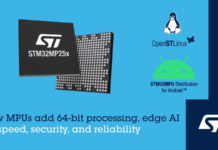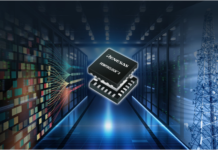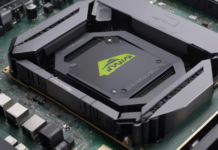Most cars, vans, and trucks used worldwide today are powered by engines burning fossil fuels. But that may now be changing as the market for Electric Vehicles (EVs) finally takes off. Analysts at BloombergNEF expect annual EV sales to surpass 20 million by 2025, overtaking sales of new petrol and diesel vehicles. The range of batteries and charging infrastructure has now brought electric cars close to the performance and economy drivers demand. The use of advanced semiconductor technologies plays a key role.
The changeover
Transitioning from fossil fuel-powered vehicles to EVs is widely considered one of the most important goals to reduce carbon emissions. In 2020, road transport was responsible for about one-fifth of Europe’s carbon emissions. Although people have been positive about EVs for many years, there have been some barriers to consumer adoption. Chief among these are anxiety around driving range, charging times, and the affordability of electric cars. This is changing now due in part to the development of power electronics. Behind the scenes, they have sparked car electrification by increasing EV powertrain and maximizing driving range for a given battery pack while decreasing charging times and supporting the drive for lower-cost EVs. This is a significant step forward in affordability considering that batteries still represent the higher cost of an EV.
Traditionally, the semiconductors used in power electronics devices were made of silicon. Now, new materials, like silicon carbide (SiC) and Gallium Nitride (GaN), capable of offering previously unavailable power efficiency gains, outperform silicon when it comes to high-power applications required for EVs. Today SiC is extensively used in the main EV systems with GaN being considered in OBC and DC-DC converters for the next design iterations. STMicroelectronics is at the forefront of the development of these wide bandgap materials. SiC, with its numerous advantages over pure silicon, is a technology accelerator for EVs.
SiC enables EVs to gain 10-15% more range, recharge the battery twice as fast and, above all, optimize the total cost of the electric powertrain compared to pure silicon implementation.
Extending EV range and lowering system costs
The key to extending an EV’s driving range is to make the battery charge last as long as possible. This is especially important since in many areas there are still not enough charging stations in operation. EVs with the largest batteries can cover impressive distances between charges (up to about 400 miles or 640 kilometers). But these vehicles are at the top of the price bracket, making them too expensive for most consumers. EV manufacturers are striving to squeeze out as much charge as possible from their vehicles’ batteries to keep the cost lower. To do so, they need to raise power efficiencies in EV systems.
SiC has been under development for decades and, due to reduced conduction and switching losses and higher maximum operating temperature, is fast becoming the material of choice for EV manufacturers. In spite of the basic material, say substrate, inherently exhibiting higher defectivity levels, nevertheless, significant improvements in overall quality are assuring excellent lifetime values to put it on a par with long-standing silicon products. It already powers millions of EVs on the road today. These game-changing power semiconductor devices deliver much greater efficiency than their predecessors could (rising well above the 90% mark), thanks to their ability to turn on and off tens of thousands of times per second. This efficiency means that power losses within EV systems are a lot less. Therefore, the charge held in their batteries lasts longer and the range is extended. SiC technology also enables manufacturers to use smaller batteries, allowing them to design new car architectures through dramatic volume or space reductions. As well as extending the range covered on a single charge, or a longer range with a given battery pack, the overall cost of the powertrain can be reduced. Lowering their cost makes them accessible to a bigger proportion of the population.
Faster charging
In addition to range and cost, the time it takes to recharge the batteries is an important consideration for motorists who are used to going to petrol stations and quickly filling up their vehicle’s tank. When considering EV charging, it must be appreciated that a modern EV battery can hold several days’ worth of energy for a typical European or American household. Transferring all that energy in a short period, therefore, represents a real challenge, and the time for a full charge can easily be over an hour – even with a high-speed charging station. SiC can operate at far higher voltages than silicon-based devices. Because of this, it is also ideal for employing in the charging infrastructure supporting EVs. Through the use of SiC, the high voltages needed to deliver faster charging can be attained – making battery recharges out on the road quicker and more convenient.
What about hydrogen-powered vehicles?
Though battery-powered EVs are at the forefront of efforts to reduce the carbon footprint of the transportation sector, hydrogen fuel cells also have a part to play. This technology is suitable for heavy-duty and long-distance transport including trucks, buses, and other long-service vehicles. Here a chemical process turns hydrogen gas into electricity, with water vapor as the only by-product. Hydrogen-powered EVs, like battery-powered EVs, rely on fuel-cell systems that generate electricity. Therefore, existing semiconductor technology can be incorporated into fuel-cell vehicles to maximize their performance.
An ongoing commitment to EV manufacturers
STMicroelectronics has been instrumental in developing silicon carbide based on 25 years of focus and commitment in R&D supported by a large portfolio of key patents. Our SiC devices are now deployed in millions of vehicles worldwide, with that number expanding every day. The development of our SiC technologies contributes to better energy efficiency and lower emissions for automobiles. It is also used by industrial customers for applications such as solar power generation and renewable energy storage, due to its higher efficiency and increased power density. This results in smaller, lighter systems and a lower cost of system ownership. As global demand for EVs and solar power continues to grow, STMicroelectronics is investing to expand our operations and recently announced plans to build a new factory in Catania, Italy. It will produce SiC semiconductor substrates to support the increasing demand from ST’s customers for SiC devices across automotive and industrial applications as they transition to electrification and digital transformation.
For more information visit ST Blog Here.
















